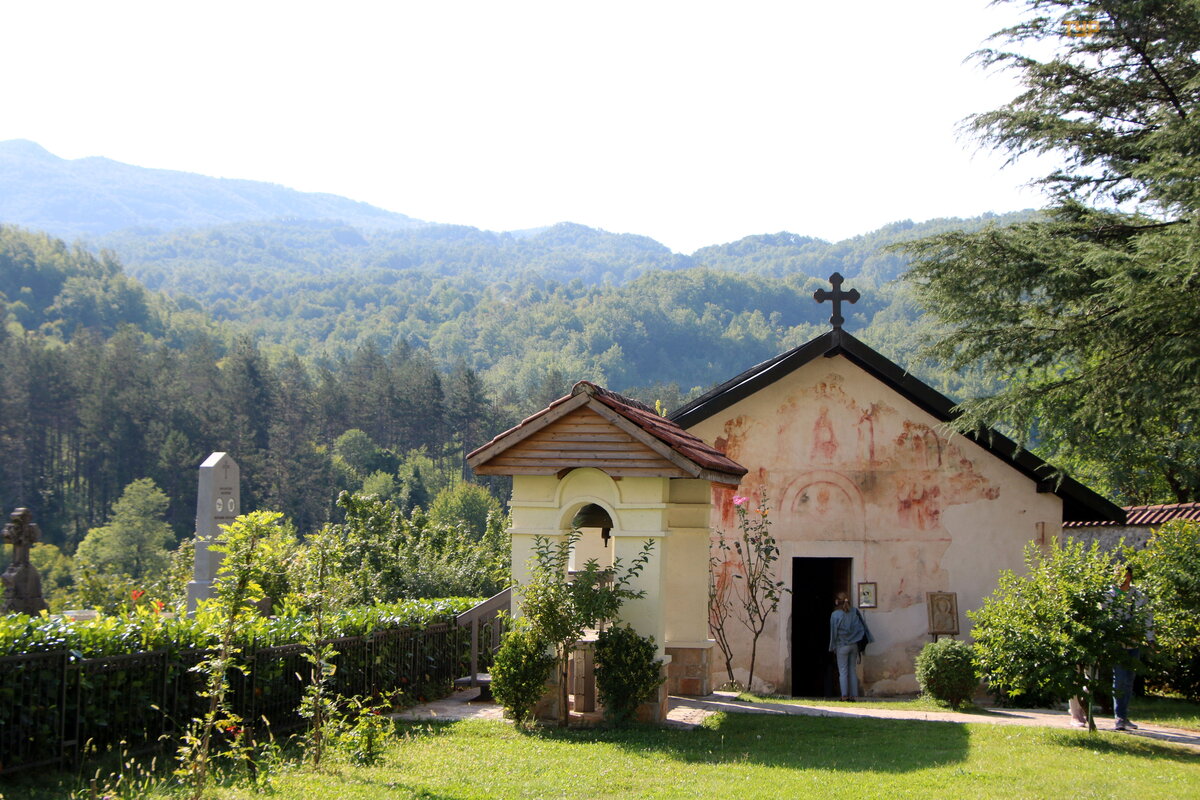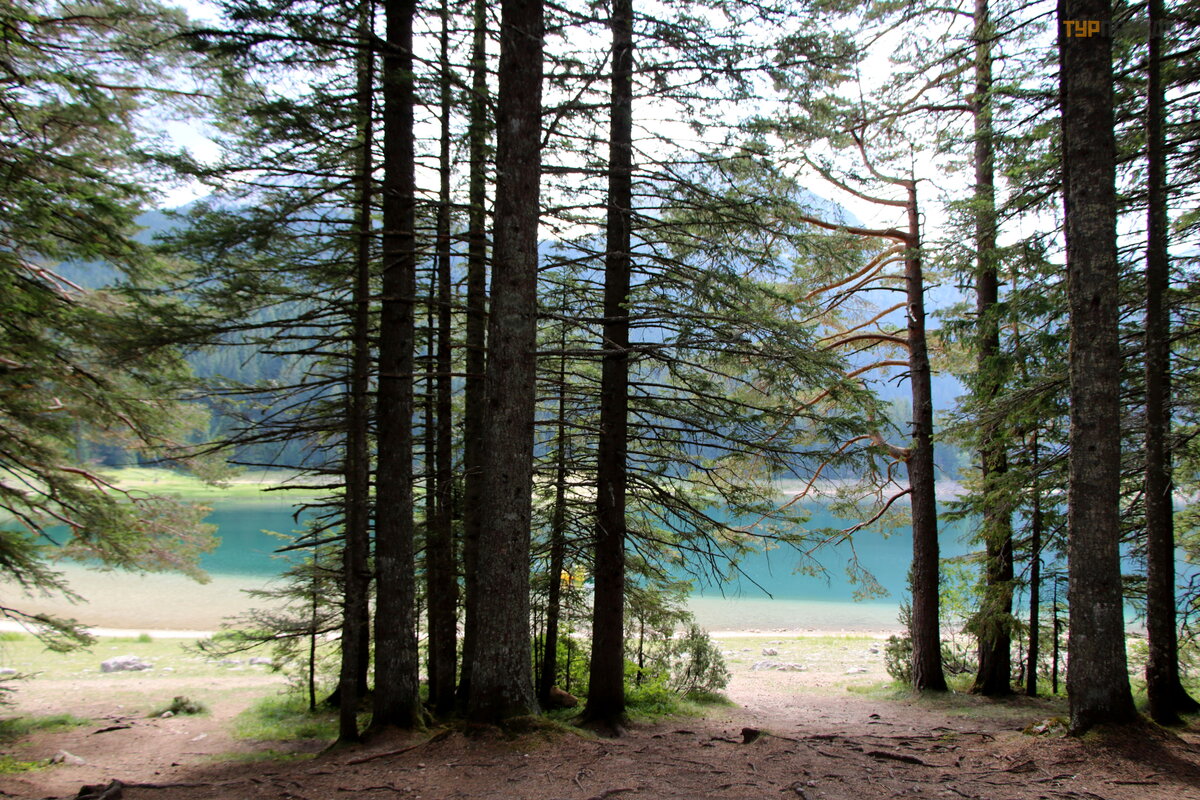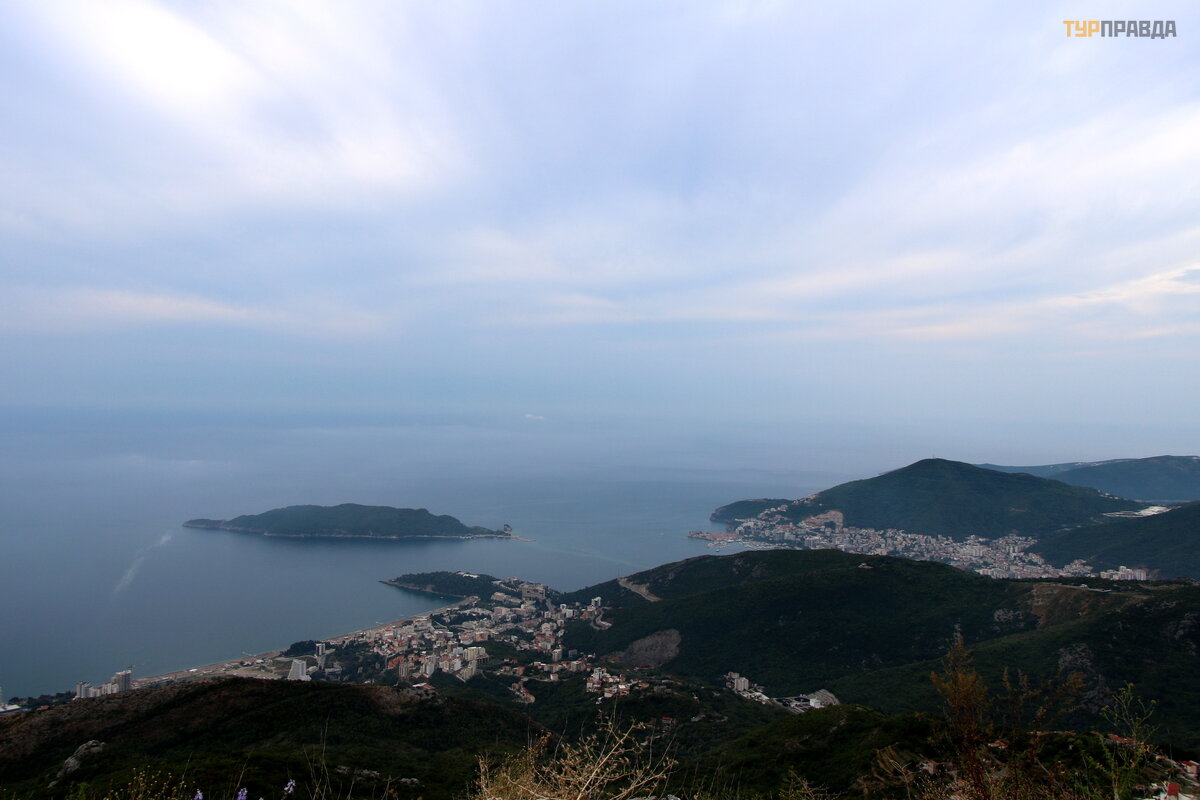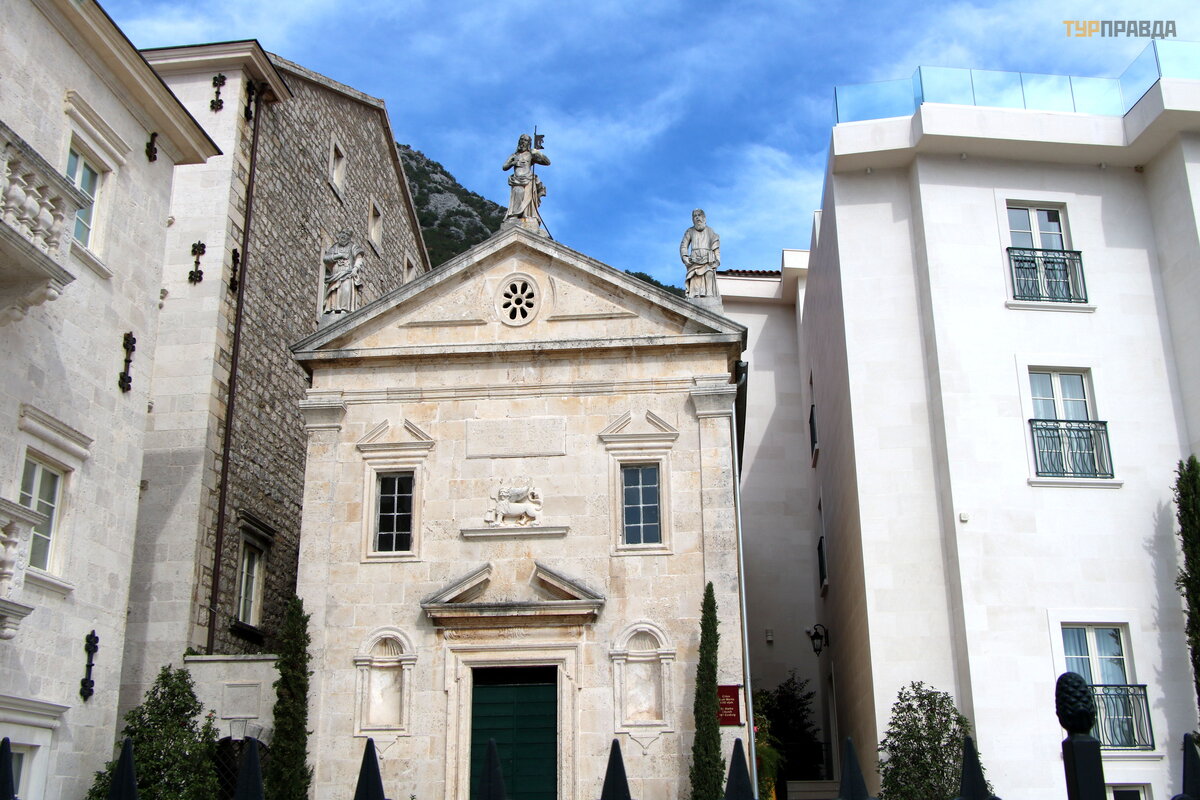Montenegro. Velvet season. Part two. "Excursion and tourist"
Montenegro. Velvet season. Part one. Dating>>>
In order to get to know the country better, of course, you need to delve into its history and modernity. Despite its modest size, Montenegro is very different in its climatic zones. There is everything here - the sea, and the plains, and the mountains, and the most beautiful natural parks, and ancient shrines, which we definitely need to see, so as not to hurt for a waste of time lying empty on the beach. Experts say that if you have not seen the north of the country, you have not seen Montenegro. Since the southern Palmyra was chosen as the place of our permanent deployment, paving the way north, we will cross almost the entire territory of the republic.
The choice was not great, but given the small number of days in the country, it was necessary to combine the wishes of all vacationers and see all the main attractions. It was not possible to unite due to different weight categories and tourist preferences.
The younger generation had their own view of things, they had to go to the mountains for three days to climb some peaks there and get to some incomprehensible lakes. We had too many three days to climb the unknown mountain peaks, so we broke away from the youth company, and thus did not allow ourselves to get involved in another adventure. And professional adventurers, renting a cart, went to the mountains, where they rented a house in the small town of Zhablyak and enjoyed the pristine nature with climbing the mountain slopes.
We decided to choose a more comfortable, though less romantic option, booking a tour called "Mini Montenegro", during which we traveled to the north to see the canyons of the Moraca and Tara rivers, the famous bridge Djurdjevic and Durmitor National Nature Park, which is displayed in the Black Lake.
Here, high in the mountains, in the canyon of the river Moraca, the walls of the ancient monastery open before us:
This is a complex of buildings built in the Byzantine style. The architecture of the Monastery is unlikely to impress you, but the energy here is strong. For tourists, this place is associated with the Garden of Eden. Indeed, the monastery stands out with beautiful well-groomed paths and an abundance of greenery, where cacti, tangerines, limes grow, and a stream flows.
Our youngest brothers enliven the picture. Funny pass:
And the cat sleeps soundly:
The history of the male monastery dates back to the 13th century. This is an old cult object, the first stone of which was laid by local princes. However, during the reign of the Turkish sultanate in the Balkans, the Moraca Monastery was destroyed, but the main buildings have survived. The temple was later restored. Around the 16th century, it was ennobled by updating the decoration and interior painting, which can be seen today. Therefore, the main attraction of the monastery are frescoes and ancient paintings, which are a real heritage. Inside the temple, any shooting is prohibited, but due to ignorance I clicked the camera, for which I received serious condemnation from the priest.
And the frame remains (frescoes date back to the 13th century):
The main building here is the Church of the Assumption of the Blessed Virgin . The monastery preserves very significant relics of Christendom - the relics of the martyr Harlampius, and the icons of St. Simeon and St. Sava by the painter Cosmas, as well as handwritten gospels.
Another small church is located on the territory of the Monastery. This is St. Nicholas Church . It is quite small, because during the Ottoman rule, churches were built that could not be distinguished from a residential building. So the Montenegrins tried to keep their faith.
Walking through the territory you can wash your nose in a spring of holy water, they say that with its help you can even rejuvenate.
One malachol aunt from our group, splashing in the holy baptismal font, shared her impressions for half an hour, enthusiastically explaining to us how she "feels unearthly pleasure and rejuvenation right in front of my eyes. " My husband advised her to rejuvenate all parts of her body next time.
Monastic buildings and cells fit very organically into the interior. Only 7 monks live here on a permanent basis, but they did not manage to get inside, novices jealously hide their homes from prying eyes.
But the monastery bell tower is quite modest:
The monastery even has its own apiary, which is adjacent to the necropolis:
Monks generously share with tourists the beauty and spirituality of this place.
You can even buy monastery honey, wine, brandy and other gifts of nature, including promotions from competing companies.
We leave the sacred monastic monastery and go to see the next tourist attraction, to the bridge Djurdjevic. On the way we stop for refreshments. I think that there is only one road to the city, so the restaurant "three sandpipers" is also in a single copy, because reading the previous reviews caught deja vu. So I will not reveal America to you, all the same hut.
And the same grilled trout with two "pieces of potatoes" (with potatoes here, it looks like a maniac), which means deficit.
Storage is not cheap, a portion of 10 euros. But here the standard, you could order steaks, the price is identical. However, it was Thursday, a fish day, so we decided not to break the rules of nutrition.
Throwing aside the lyrics, I can say that the culinary pleasure did not work out, just a simple fish. But this is not the main thing, the trick is that we were very lucky with the guide. He was a handsome tall Montenegrin with an equally good name, Milos. The boy simply had an incredible sense of humor with which he painted the long road to the mountain slopes of the northern serpentines. Milosz told us that in the past he was a billionaire, but now hard times have come and he decided to forge a guide, even showed us his money supply to confirm the truth of his words.
And if true, Montenegro is a very poor country, and people are forced to work and work in several companies. For example, Milosz works at a factory producing some parts and works as a guide on his weekends.
Therefore, he lives in Podgorica, and in the summer rents housing on the outskirts of Budva.
The average salary in the country is only 800 euros, and prices are high, so the people have to literally survive. They are not accepted into the European Union, they are constantly fed with promises and demand to reduce corruption. I think that the situation is the same in our country, although no, they are still doing better.
So after the conversation, unnoticed, we come to the famous Djurdjevic Bridge. This is a unique architectural structure, which is the highest arch-type object. And the bridge was named after the farmer, because it was built on the lands he owned.
There is a lot of traffic on the bridge, so you need to be extremely careful during the photo shoot to avoid getting under the wheels of cars rushing here at insane speeds.
For fans of extreme sports, a zipline has been built, which is popularly called "tarzanka", on which thrill seekers can fly over the canyon of the Tara River.
Our children flew, but noted that the extreme "zero", and "the wind in the hare, and I spar. " We are less emotional, so we did not fly over the canyon. They stood modestly on the bridge, fixing their snouts on the background of the canyon ...
...and satisfied with the view of the northern beauty, went to Durmitor National Park. So much has been said, shown and sung about this park that it is impractical to spread thoughts on the screen. I will just say that the park is very beautiful, the nature is just amazing.
Enough places for walking and fishing:
Hand squirrels are jumping around, which Milosz for some reason called nimble, maybe from the word clever, I don't know.
All residents of the park are represented on the stand:
There are fun installations:
Enjoying the full beauty of nature, we return to the place of our location. We were satisfied with the tour, so we can safely recommend it to future tourists. The cost of only 25 euros per snout, I think, is a very good price for such a wide overview of northern Montenegro.
The next point of our excursion program was the center of the country.
This time we decided to combine the two in one and ordered a tour "Heart of Montenegro" worth 50 euros, which included a visit to the ancient capital of Cetinje, travel on the roads "Twenty-five serpentines", two popular cities - Perast and Kotor, and a boat trip to the reef of the Virgin. In principle, I do not like these divorces like "two in one", but here everything seems to be going well.
I understood that it would be like a "review", because in one day to cover the uninhabitable, simply unrealistic. But the basic idea of this area we still have.
Reading previous stories, I noticed that the former Montenegrin capital of Cetinje was not flattered by travelers. Maybe there is a rational grain in this, and maybe not.
Cetinje is a small town that is the cultural center of the capital, and even the Ministry of Culture remained with it, although the rest of the municipal offices were moved to the current capital - Podgorica. And the President's residence is also located in Cetinje. Despite the fact that the town is small, its attractions are very popular with both locals and tourists. The main one is Cetinje Monastery - the most famous spiritual relic of Montenegro. It attracts believers with its atmosphere, which has remained unchanged since ancient times.
Seeing a huge crowd of pilgrims and pilgrims, I did not dare to go inside the temple due to the pandemic, which during our stay in Montenegro was rapidly gaining momentum.
The popularity of the monastery is due to the presence of the largest Christian shrines - the right hand of John the Baptist and the particles of the Life-giving Cross. The first mention of the holy monastery dates back to the 15th century, when the then owner Ivan Crnojevic , retreating under pressure from the Turkish conquerors, moved his residence there. And now a monument to him has been erected, but not in the temple, but in the center of the city near the main square. Here is a sculpture of a handsome man with a proud posture.
And in the Church of the Nativity of the Virgin the relics of St. Peter Tsetinsky are kept.
Somehow there is no place to walk here, especially without knowing the city. We go along the main pedestrian street Negusha, which starts from the Palace shopping mall.
Characteristically, in the Montenegrin language there is some unthinkable economy of vowels.
For example, the square sounds like "trk", the city - "strp", red - "red", frost - "frost", for example, our good Santa Claus translates as Santa Claus, and hugs - tied. Even melodic wine has names - crystal, urn. In general, our people with their singing Ukrainian language can be broken.
Montenegrins, unlike us, honor and honor their rulers, so they build temples in their honor, build palaces, open monuments and museums. Museum dedicated to King Nicolas I , where he once lived.
Well, what can I tell you about the promenade in Cetina?
For the second time, I would definitely not go here, except for the sake of Shame (no, do not be ashamed, but to see the National Theater, which, according to Montenegrins, is simply wonderful here). Thank you Cetina, please go on.
We refuel at a gas station and go to the attraction for survival on mountain roads, called the route "Twenty-five serpentines". The rules here are simple: just press the gas brake, depending on the situation, and pray. The rules are the same for passengers. Along the way, I remembered so many prayers I had never heard, and my brain feverishly counted all the saints, forcing me to quote the Old and New Testaments from Matthew, Luke, and others.
Unfortunately, a church riot was planned in Cetina and many cars were going there, which were simply impossible to miss, because on the one hand there was the failure of the cliff, and on the other there was a mountain.
I had to turn back to free the wheel.
Honestly, even if I had a "carriage of permission" with me, I would never have risked getting behind the wheel on this path of suicide.
But Montenegrins are probably used to it, because they do not pay attention to such a seemingly stalemate, periodically turn on the gas, brakes, add speed and drive these serpentines, not noticing the fainting of passengers. But the cart is probably lucky also because the whole bus prays for his health. Climbing to the top, of course, contemplated the beauty when the whole Budva Riviera lay at your feet.
But, as in Cetinje, I did not want to come back here for the second time. Although the guide convinced us that the road is reliable, it was built by the Austrians, and the quality of their work is beyond doubt, I was not encouraged. I admired the landscapes.
And in another, "give away your hat and coat, I saw your birthday. "
The road took us to Negushi , a colorful village famous for its production of prosciutto and cheese from organic products.
Yes ...advertising is the engine of trade! All the way, we were guided by a trindel about this prosciutto, that even I, who have not been engaged in such lures for a long time, was a little intrigued, what kind of gastronomic exclusive is there? In the information about the tour it was stated that the price includes free tasting. In fact, the tasting included a crayfish scale and a sliced plate for 100 people. I was just blown away by our people, I haven't seen such a queue for a local delicacy for a long time.
Realizing that I will definitely not stand behind the free cheese in the mousetrap, I joined the paid queue. Having won a sandwich for 2.50 euros in a fair fight, the crayfish started eating. What can I tell you? My God!
Well, prosciutto as prosciutto, besides still very salty as for me, and cheese in general about nothing. Although "cruel drink" (strong drinks) they are quite good.
We went to inspect the ethno-dryer:
Negusi has a very well-developed trade in all kinds of Montenegrin gastronomy specialists, such as wine from all kinds of berries, fruits and grapes, a cruel drink from the same ingredients, cheeses wholesale and retail, balyks from all known breeds of pigs. In general, this fairgrounds made my eyes water. Deciding that I would buy the same prosciutto-cheese-wine in a local store, I hid my wallet away. Satisfying the sharply increased needs of tourists as a result of skillfully conducted marketing by a guide - a virtuoso, we pack a bus and go to see the two most beautiful cities in Montenegro - Perast and Kotor.
And again, the views of Montenegro take my breath away. Going down the many serpentines, we again admired the fantastic views.
Landscapes are simply cosmic:
And before us opens the medieval, as if lost in time, located on the hill of St. Elijah, the ancient city of Perast , which creates a romantic mood.
I want to declare my love…
I think that thanks to its beauty and ancient history Perast won the hearts of tourists. Despite its tiny size, the number of attractions, it can easily give a head start to such popular resorts as Budva and St. Stephen. Majestic palaces and churches have been preserved here.
Walking through the medieval streets, looking at stone houses, a pleasure, because then you discover interesting little things.
This is how we walked, looking into other people's courtyards and windows. The city has only three streets, and about 400 inhabitants, we have more in the villages.
The main attraction of Perast is its embankment, which you can easily get around in just 20 minutes.
However, it is here that the city's palaces, museums, churches and restaurants are located with exorbitant prices for everything. For example, you are unlikely to enjoy coffee for less than 2 euros.
St. Nicholas Bell Tower , built in the 15th century in honor of the liberation from the Turks.
Entrance to the bell tower costs 1 euro and for a cheap you will have a stunning view of the Bay of Kotor.
This is the most beautiful bay in Europe, which hides from us Church of the Virgin on the man-made island and St. George's Island, where the Benedictine abbey is located. It is impossible to visit the island, only relatives of novices and higher ranks of hierarchs are allowed there.
But Lady of Shkrpel (Church of the Virgin on the Reef) is open for visitors. So we get on a boat and go to the monastery of sunken ships.
This island was built by locals for almost two hundred years, flooding ships. Even now the island is being expanded and strengthened every year.
The Catholic Church of the Mother of God is written in great detail in the story deppo, so I will not delve into and repeat, I will only note that there are two unique icons, one of which appeared magically, and the other woman embroidered from her hair for 25 years (Rather, the hair of angels was embroidered from human hair, so at first they are dark, and after the work became completely gray).
Inside the temple are preserved various ancient values. There are antique lanterns and ship bells and musical instruments, as well as various kitchen utensils ...
...(in my opinion, the usual bench of elders).
Weapons arsenal:
Chandelier made of real Murano glass, which is over 150 years old:
Luxurious altar made of four types of marble. On the altar - the icon of the Virgin:
There is also an archeological museum with artifacts, the oldest of which date back to the II century BC. е.
Mortar mortar:
Silver, bronze and gold plates donated to the church by sailors and townspeople are built into the church walls:
An unusual reef, an interesting church, a lot of history. It is worth visiting here, of course, that in principle, everything is done.
The next point of our program was the city of cats - Kotor, which is confirmed by the incredible presence of cats on its streets (as you guessed, the cat is a cat, and the dog - a dog, almost a dog, so in principle understandable).
Kotor is an ancient, very beautiful city in the Bay of Kotor, said to be reminiscent of Norwegian fjords.
The main attraction is St. John's Church :
The city is surrounded by a thick fortress wall:
Be sure to see the Old Town, which is a UNESCO World Heritage Site, as it is very well preserved.
The city was built as a maze for defense purposes. That's why the streets are very narrow ...
and literally at every turn you will find a palace, a fortress of the 13th century, a church with a history of 10 centuries.
Proud is small, and walking in it alone is a pleasure.
We were told that even the ice cream here is truly Italian. So I also decided to try ice cream. Montenegrin ice cream was extremely tasty!
The man was more interested in light vehicles. So I wanted to take a picture of myself against the background of Montenegrin bikes.
I consider a must-see. And even once, again, many, many times! This is a very pleasant place for both walks and study of ancient history.
I promise the city of cats, be sure to meet him again and say thank you to him!
This is the excursion Montenegro we got as a result of the first acquaintance. And we really liked it! Wonderful country! The most beautiful nature! Unique sea! And the bread and salt hospitality of Montenegro, which I will describe in the next part.
Montenegro. Velvet season. Part three. Gastronomic with a light romantic flair>>>







































































































































































































































